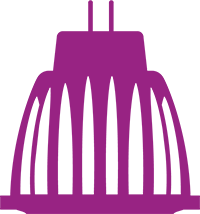The IEA 4E SSLC Platform is working to help policy makers track and understand the latest science and research on how lighting impacts health.
Health Effects of Solid State Lighting
* * * NEW REPORT – OCTOBER 2024 * * *
October 2024. This report offers a comprehensive review of the scientific knowledge acquired in the course of the last ten years on the effects of solid state light on human health. The report considers issues that concern both large fractions of the population and small sensitive groups of people. It is intended to support policymakers, offering guidance on lighting and health, as they consider product regulatory requirements, procurement specifications, programmes to raise public awareness, and other initiatives, in particular with respect to solid state lighting (commonly known as LED lighting). However, the report will also be useful to the entire lighting community, including scientists engaged in fundamental and applied lighting research, illumination engineers, manufacturers, and lighting practitioners.
The effects of electric light on health are technology agnostic, however advances in physiology and medicine have contributed to new awareness and understanding of the impacts of light on human health. The study examines some features of SSL products that may pose a risk and which could be improved or applied differently to achieve better outcomes in terms of health and well-being.
The report covers both acute effects (effects that develop during or immediately following an exposure) of optical radiation on the eye and the skin, discomfort glare, circadian disruptions, neuro-behavioural effects, and temporal light modulation (TLM), as well as long-term effects (effects that build over months or years) including age-related macular degeneration, myopia and cancer risk.
In order to communicate the findings from the report, the IEA 4E SSLC Platform is convening a series of webinars in two different time zones. The findings of the report have been divided up across three webinars which will each be presented twice, once for the Australia/Asia time zones and once for the America/Europe time zones. Please register to attend the webinar series by clicking on the links below. After the webinars, we will post the slides and recordings:
- 19 November 2024 – Temporal Light Modulation: Australia/Asia time zone – America/Europe time zone
- 20 November 2024 – Circadian, Acute Neuro-Behavioural & Long-Term Effects: Australia/Asia time zone – America/Europe time zone
- 21 November 2024 – Photobiological Safety & Glare: Australia/Asia time zone – America/Europe time zone
.
Visual Perception under Energy-Efficient Light Sources – Detection of the Stroboscopic Effect under Low Levels of SVM
December 2019. Temporal light modulation (TLM, known colloquially as “flicker”) of light sources has visual, neurobiological, and performance and cognition effects on viewers. This study aims to address an important gap in the scientific literature on the measurement of levels of TLM of light emitting diode (LED) light sources that may affect human health and productivity.
The outcomes of this research are intended to assist decision makers when developing lighting policy measures and regulations. This study was initially proposed in response to a request for public comment on the draft European ecodesign regulation for lighting before a vote by the European Union (EU) member countries. An interim report was provided in December 2018, and those data were also presented at the CIE 29th Quadrennial Session in June 2019. This final report is based on a larger data set and contains a more detailed analysis of the subgroups.
A peer-reviewed paper of this research was published in Lighting Research & Technology:
Veitch JA, Martinsons C. Detection of the stroboscopic effect by young adults varying in sensitivity. Lighting Research & Technology, Volume 52, Issue 6, 12 February 2020. https://doi.org/10.1177/1477153519898718
.
SSL Annex – Potential Health Issues of Solid State Lighting
September 2014. Starting in 2011, the SSLC Platform launched a study to review all of the major health-related literature associated with LED lighting. In 2014, the SSLC Platform published a comprehensive review (download the Health Aspects Report) of the current literature on health-related impacts of energy-efficient LED systems in our homes, buildings and outdoor areas.
The study evaluates electrical risks, exposure to electromagnetic fields, glare, photobiological hazards, light flicker and non-visual effects of light. It provides a detailed review of these topical areas, and thereby gives decision makers important information that they can apply in the policy context of LED lighting.
The report found that SSL technology is not expected to have more direct negative impacts on human health with respect to non-visual effects than other light source technologies. Furthermore, for electromagnetic fields, human exposure emitted by SSL products does not appear to be a critical issue as their magnitude is generally much smaller than those corresponding to discharge lamps or certain household appliances. The report also provides advice on flicker and glare.




































